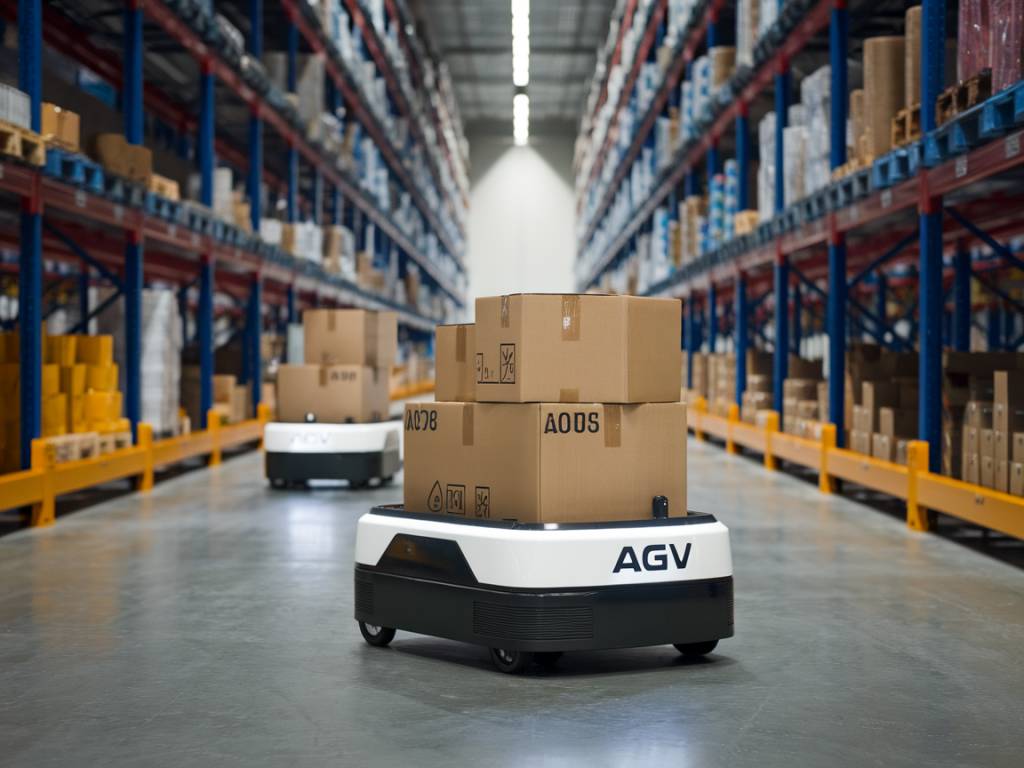The rapid evolution of technology in warehouses is transforming traditional operations into streamlined, automated workflows. One such technological advancement is the use of Automated Guided Vehicles (AGVs). These driverless robots have shown considerable potential in enhancing efficiency and precision within modern warehouses, addressing challenges posed by manual labor and increasing operational demands. This article explores the role of AGVs in contemporary warehousing, highlighting their benefits, applications, challenges, and future prospects.
Understanding AGVs: Definition and Types
Automated Guided Vehicles, or AGVs, are mobile robots that use markers, magnets, or vision to navigate within a warehouse. They are designed for material handling, making repetitive tasks more efficient and reducing the reliance on manual labor. AGVs can be classified into various types based on their design and functionality:
- Towing Vehicles: Used for pulling loads behind them.
- Unit Load Carriers: Capable of carrying discrete items or pallets.
- Forklift AGVs: These are designed to maneuver through warehouses, lifting and transporting goods like traditional forklifts.
- Assembly Line Vehicles: Facilitating the movement of products through assembly lines.
Benefits of AGVs in Modern Warehouses
The adoption of AGVs offers several far-reaching advantages for warehouses:
- Enhanced Efficiency: AGVs seamlessly integrate into warehouse management systems (WMS), ensuring a steady and uninterrupted flow of goods.
- Precision and Accuracy: With minimal human intervention, AGVs minimize errors in material handling, ensuring the right products are transported to the correct destinations.
- Cost-Saving: Though the initial investment might be high, AGVs reduce long-term operational costs by cutting down on labor expenses and minimizing errors.
- Safety: AGVs can operate in potentially hazardous environments, reducing the risk of accidents and injuries associated with manual labor.
- Scalability: They offer flexibility in operations. As demand fluctuates, more AGVs can be added or removed without significant logistical challenges.
- Environmental Sustainability: Many AGVs operate on batteries or renewable energy sources, contributing to a warehouse’s green initiatives.
Applications of AGVs in Warehouse Operations
AGVs can be applied in various domains within a warehouse, optimizing multiple processes:
- Material Transport: AGVs can transport raw materials, finished goods, and intermediate products between different stages of the supply chain.
- Order Picking: Integration with warehouse management systems allows AGVs to assist in picking orders accurately and efficiently.
- Loading and Unloading: They can handle goods movement between the warehouse and transportation vehicles, ensuring smooth inbound and outbound logistics.
- Inventory Management: AGVs aid in real-time tracking and management of inventory, reducing the risk of stockouts or overstock situations.
- Cross-Docking: AGVs facilitate the direct transfer of goods from receiving to shipping, minimizing storage time and expediting delivery processes.
Challenges and Considerations
While the integration of AGVs in warehouses brings numerous benefits, it is essential to address particular challenges:
- Initial Investment and ROI: The capital required for AGV implementation can be substantial. It’s crucial to evaluate the return on investment and long-term benefits before committing.
- Maintenance and Upkeep: Regular maintenance is imperative to ensure AGVs operate efficiently without frequent downtimes.
- Integration Complexity: Seamless integration with existing warehouse management systems and infrastructure can be challenging, necessitating skilled personnel and potentially extensive software customization.
- Adaptation Workforce: Training employees to work alongside AGVs and manage automated systems can be a time-consuming process.
- Space Efficiency: Designing warehouse layouts that accommodate AGVs’ routes and operations without impeding overall space utilization is critical.
The Future of AGVs in Warehousing
The future of AGVs in warehousing looks promising with continuous advancements in technology:
- AI and Machine Learning: The integration of AI can enhance AGV navigation, decision-making, and interaction with dynamic environments, making them more autonomous and efficient.
- Collaborative Robots: Collaborative robots or “cobots” are designed to work alongside human counterparts, enhancing the human-robot synergy in warehouses.
- Enhanced Sensors and IoT: Improved sensors and IoT integration can facilitate better real-time data collection, predictive maintenance, and overall operational efficiency.
- Increased Customization: Warehouses will likely see an increase in customized AGVs tailored to specific operational needs and environments.
- 5G Integration: With the advent of 5G technology, AGVs will benefit from faster and more reliable communication, enabling more robust connectivity and management within smart warehouses.
- Sustainability Focus: As businesses emphasize sustainability, AGVs powered by renewable energy sources will become more prevalent, aligning operational efficiency with environmental stewardship.
Summary: AGVs revolutionize modern warehouses by enhancing efficiency, precision, and safety. Despite initial investment challenges, their benefits in material handling, order picking, and inventory management outweigh the costs. Future advancements, like AI and IoT, will further solidify AGVs’ role in smart warehousing, promising a sustainable and efficient future.
